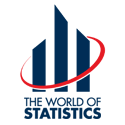1999 Hansen Lecture
David F. Findley, U.S. Census Bureau
"Diagnostics for Modeling and Adjustment of Seasonal Data"
To be incorporated in a Springer Lecture Notes in Statistics volume.
Discussants:
Allan Young, former director of the Bureau of Economic Analysis
William P. Cleveland, Federal Reserve Board
Abstract: Seasonal adjustment is applied to economic data from periodic surveys to help analysts detect economically meaningful changes in the time series. Adjustment can dramatically alter the measured values. The time series to which it is applied usually have seasonal movements whose pattern changes over time, and many are subject to unsystematic effects, for example abrupt changes of level or the turbulent, market-driven behavior of small numbers of large companies. There are also systematic effects that require appropriate treatment, such as heteroskedasticity between different calendar months, day of week effects, and effects due to the shifting dates of holidays such as Easter.
Progress in seasonal adjustment depends on the development of models or methods that better account for these effects. Perhaps less obviously, progress also depends on the development of diagnostics that identify the presence of such effects and show whether treatments applied for them result in satisfactory adjustments. Much recent progress has come from the use of specialized time series models and appropriately focused diagnostics, especially graphical diagnostics.
Our talk begins with a review of basic motivations, ideas, and issues of seasonal adjustment. There follows a presentation of some seasonal adjustment, modeling, and model selection diagnostics of the Census Bureau's new X-12-ARIMA and X-12-Graph programs, with an emphasis on graphical diagnostics. The applications we provide of these diagnostics show how some of them address fundamental statistical modeling issues.






